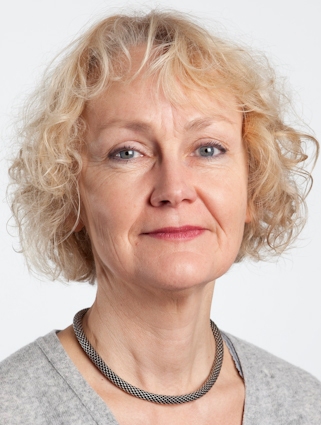From gender equality to gender balance
Gender balance is as much a question of quality as of fairness. This is a basic principle in the Research Council of Norway’s new gender equality policy which states that at least 40 percent of project managers must be women.
“We go a step further in this policy, and the objectives are more specific and verifiable than before,” says Jesper Simonsen, Executive Director of the Department of Society and Health at the Research Council.
The new Policy on gender balance and gender perspectives in research and innovation is valid for the years 2013−2017. According to Simonsen, the title also indicates an important change.
“We have exchanged the term ‘gender equality’ with ‘gender balance’, and we have done this because we recognize that the issue is no longer just about establishing equal rights or combating formal and structural discrimination,” he says.
“Instead it now has mainly to do with achieving gender balance in all fields and at all levels. We have come so far that it’s not just a question of fairness, but more a question of quality. We achieve much more in research when there is gender balance.”
Whereas the previous gender equality policy was more analytical and focused more on the democratic challenges of gender bias, this policy is focused more on concrete measures.
“The previous policy had a good analysis that we are still expanding on, but now it will be easier to measure whether we have achieved what we wanted to,” says Simonsen.
One concrete measure is the target that at least 40 percent of all new project managers must be women by 2017. Another is the continuation of the recommendation that all new programmes must assess how gender perspectives can be integrated into their research.
New requirements
“But who is it that will make the assessment? Is it the researchers or the Research Council that will decide whether gender perspectives are needed in a research programme?”

“The programmes’ administrative staffs, work programme committees, programme boards and division research boards are responsible for assessing whether there are relevant gender perspectives, which will then be written into the work programme,” explains Simonsen.
“And gender balance and gender perspectives are specific assessment criteria in all application processing at the Research Council, and projects are assessed on this basis by our administration, referees and programme boards.”
“Do the researchers themselves have any responsibility for making this assessment?”
“No, but the researchers should address gender perspectives in the grant applications when the work programme and calls for proposals ask for this.”
Lise Christensen, the Research Council’s special adviser for gender equality and gender balance in research, also emphasizes that the programmes have a responsibility to assess whether the gender perspective is relevant.
“All new initiatives, regardless of scientific field, must undergo a concrete assessment of whether a gender perspective is relevant for the research they conduct,” she says.
“But it’s clear that an assessment of this kind requires a certain level of expertise, so naturally the Research Council has a responsibility to do the preparatory work to ensure that qualified decisions are taken.”
Concrete proposals before the summer
“We now have an internal project that looks at how we are going to operationalize the objectives that have been set,” continues Christensen.
“Before the summer we will present a proposal to the leadership at the Research Council, and then it will be possible to say something more specific. The challenge is that we have a lot down on paper – which is good of course – but the ‘proof of the pudding’ is what we are able to carry out in practice,” she points out.
“We have many good ideas, and I think there might be some exciting surprises in store.”
“Our first goal is to increase our own expertise and set clearer and clearer goals for ourselves in the process. We are just getting our feet wet when it comes to implementing the policy, but several of the objectives are very clear and obligate us to act,” she says.
She believes the policy’s concrete objectives and requirements also shine a brighter spotlight on the Research Council from the outside, and she points out that the policy has already garnered international attention.
“Then we need to deliver as well,” she says.
Must strengthen own expertise
Christensen also explains that they have specific plans to provide courses and training that will strengthen expertise on gender perspectives.

“We must increase the expertise of Research Council’s employees and those who sit on the various programme boards and preparatory committees in order to integrate this better into the way we work,” she explains.
“The innovation field, technology research and climate research are examples of areas where the gender dimension is important, but has not come very far. We need to give much more attention to this in the future,” says Christensen.
Includes innovation
Like Christensen, Jesper Simonsen believes that the technology programmes and fields related to climate change face a challenge when it comes to implementing gender perspectives.
“When we reviewed all our programmes, we found that very many of them incorporate gender perspectives. But these programmes are the ones where it is quite obvious that a gender perspective is relevant, such as in health, welfare, education and the like.”
“Within the technology programmes and research on how climate change affects society, however, it’s not so easy to see what the gender perspective is, and you must have been trained to see it,” says Simonsen.
An example of a technology area where the gender perspective has finally taken hold is gender and computer games, as mentioned previously in the article about the Gendered Innovations. The fact that gender perspectives in the innovation field are also important, but are unexplored territory in a Norwegian context, emphasizes that this time the Research Council has included innovation and all of the Research Council’s activities, not just academic research, in its policy.
Simonsen says that concrete implementation of the guidelines will be monitored more closely.
'“The guidelines on assessing gender perspectives in all areas have already been implemented over the past couple of years, but we plan to do more to check that they are actually being implemented. We will design systems that allow us to really investigate whether the fields have carried out this assessment,” he explains.
Concerned about basic research
The mainstreaming of gender perspectives in all research has given rise to scepticism among gender researchers. At last year’s concluding conference for the Gender Research Programme, many participants noted the potential risk of fragmentation and lack of basic research on gender – given that the Gender Research Programme was concluded at about the same time that mainstreaming was adopted. However, Simonsen thinks the scepticism is groundless.
“It’s true that the former Gender Research Programme was concluded at roughly the same time that we adopted this plan, but it’s also the case that we are now putting more focus on integrating gender perspectives in all research and less emphasis on measures to support gender research as a separate field,” says Simonsen.
“But quite simply, we don’t operate with permanent funding instruments to support separate fields. We use instruments when we want to boost a field to a reasonably good level, and then the field must compete with all other fields for funding. And we felt that we had come to that point with gender research,” says Simonsen, who points out that there are opportunities for basic research on gender in the form of independent projects within the social sciences, humanities and Centres of Excellence.
“In addition, we have said that if we see that a field is not holding its own, we will consider reintroducing measures,” says Simonsen.
“The policy clearly states that we will evaluate the capacity and quality of gender research with a view to expanding the field. So we have not forgotten that basic research is important.”
How particle physics can be gendered
Lise Christensen thinks that most fields will benefit from introducing a gender perspective, although not necessarily into the content of the field.
“Of course a gender perspective will not be especially relevant in generic sciences such as particle physics. What is most relevant in such cases will be who is conducting the research and why one gender is under-represented, but in that case the gender perspective lies outside of the field’s content and is actually a question of gender balance and not gender perspectives,” says Christensen.
“By the same token, a lack of gender balance may also affect how the field is presented, and even non-gendered disciplines such as particle physics or mathematics can be packaged in ways that are gendered and thus be more attractive to some groups more than others,” she says.
“So even though we distinguish between gender perspectives in scientific fields and gender balance in research, it’s clear that there is also some overlap between these two things.”
Translated by Connie Stultz.
The Research Council recently adopted a new Policy on gender balance and gender perspectives in research and innovation.

